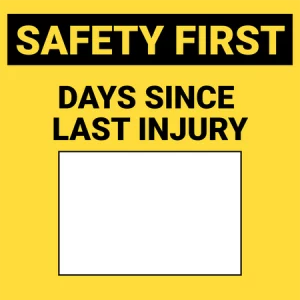Are you doing everything you can to keep your employees safe? Can you prove it? An OSHA Compliant Safety Plan – and the correct implementation of it – will help prevent fines and injuries.
How are You Using Your Safety Plan?
Most employers I talk to already have a safety manual. It’s a 300 page document that sits on a shelf collecting dust and you share it when getting ready to bid on or show up to a jobsite. Having the manual is good, but if you’re not doing anything with it, regulators who come in after an accident will know.
How can an employer get started in the use and implementation of the their safety plan? Let’s start by looking the way we’re describing it here – as a plan, not a manual. A manual infers that it’s a reference point – what do we do when something comes up? A plan is proactive and action oriented.
OSHA Gives Us Guidance
Does your written policy define specific goals and expectations for the safety and health program?
One of the classic ways safety has been measured is in the number of days since the last accident. It’s great to celebrate wins. It’s also important to keep safety top of mind and this is one way to do so when used in combination other programs and reminders.

But it’s not proactive and it’s not action oriented.
Management should define goals that emphasize preventing injuries and illnesses through active participation. Goals should be both written and measurable. The plan should develop specific plans and actions to be done to achieve those goals.
Does your policy include the seven core elements recommended by OSHA?
The most successful safety plans are based on these seven core elements:
1. Management Leadership
2. Worker Participation
3. Hazard Identification and Assessment
4. Hazard Prevention and Control
5. Education and Training
6. Program Evaluation and Improvement
7. Communication and Coordination for Host Employers, Contractors, and Staffing Agencies
We don’t need to reinvent the wheel here. On a large enough scale, the number of accidents as a percentage of workers becomes very predictable. As such, there has been plenty of research done on the what is really effective at preventing accidents and injuries.
When your safety plan is built around these objectives and using these seven core elements, the more effective your safety plan will be at prevention.
When Was the Last Time Your Safety Plan was Updated?
On October 18, 2016, OSHA made their first update since the 1989 guidelines. In case you’re counting – that’s 27 years.
If your safety plan was originally written prior to 2016 – or if it was copied from someone else who built it before then – you are almost certainly working off of outdated information.
These recommendations feature an easier to use format that doesn’t require enterprise level resources to implement. Small and mid-sized businesses can use these guidelines (along with the resources we provide) and develop a customized and realistic safety plan.
Are You Ready for Your Safety Plan Assessment?
Our philosophy is to provide value to you through assessments and compliance checks to identify areas where you can improve compliance and avoid fines & penalties, and accidents & injuries. We work through this process with both current and prospective clients because it makes a real difference to both employers and employees.
If you’re ready for your OSHA Safety Plan Assessment – or an Assessment in another area of your business that we can help with – please reach out to us at contact@stillwellriskpartners.com or schedule an appointment here.
